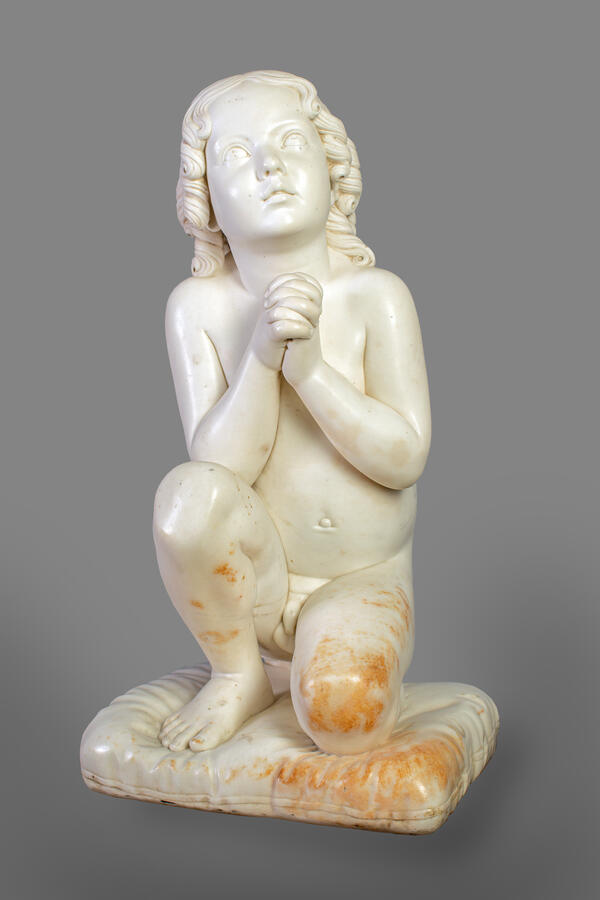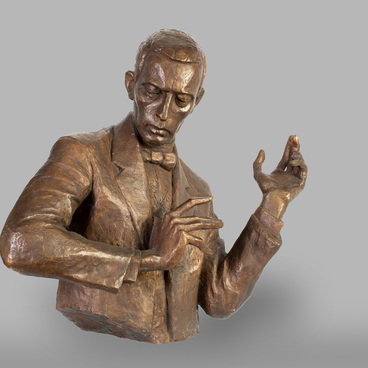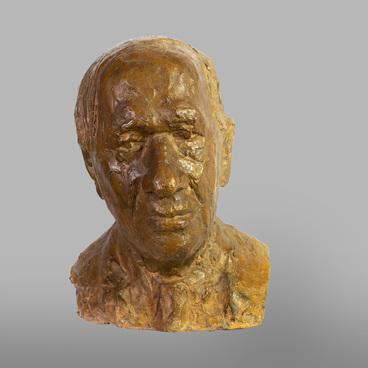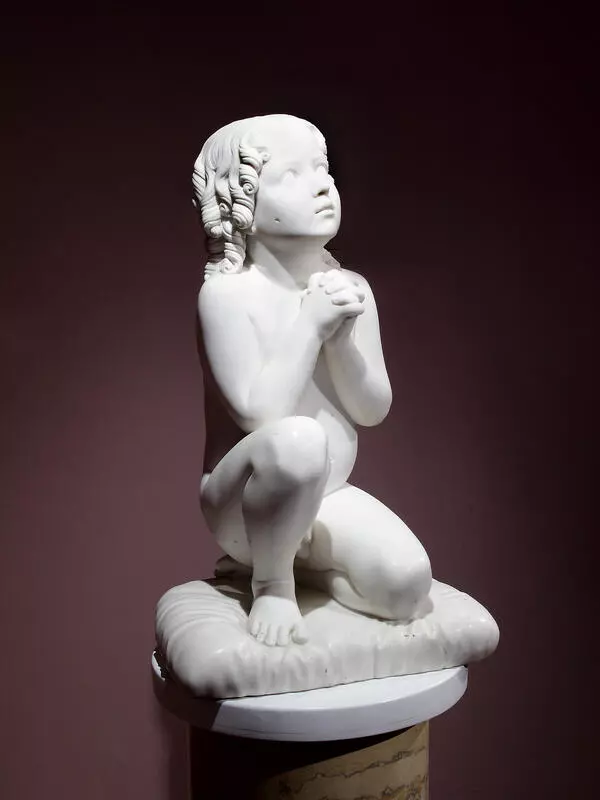The collection of the Tambov Art Gallery houses a marble statue called “Praying Boy”, created by the 19th-century Italian master Luigi Pampaloni.
Luigi Pampaloni (1791–1847) was a sculptor and student of Lorenzo Bartolini (1777–1850), a professor at the Florentine Academy of Fine Arts and one of the brightest sculptors of the first half of the 19th century. The sculpture “Praying Boy” was created between 1826 and 1828 as a tombstone and brought Luigi Pampaloni fame. The statue turned out to be so expressive that the sculptor started to receive countless orders. Having lost its original meaning, the sculpture was widely used in interior decorating.
An adorable, unclothed child is shown kneeling on a cushion. His face, framed by lush curls, is raised to the sky in reverence. The boy’s figure was sculpted in the traditions of Classicism. The sculpture combines abstract perfect beauty with truthfully conveyed spontaneity in the expression of feelings. The childish innocence and vulnerability together with the classical nude and restrained shapes create an impression of utmost purity and profound prayer.
The sculpture entered the gallery from Boris Nikolayevich Chicherin’s collection as a work made by an unknown master. As a child, Chicherin admired the touching “Praying Boy”, standing in the spacious living room of his parents’ house in Tambov. One can only imagine the feelings that were awakened at the sight of the masterpiece in the soon-to-be-famous art connoisseur and collector, whose many acquisitions were transferred to the Tambov Gallery. Later, it turned out that a similar statue is kept in the State Hermitage Museum under the name “The Boy Who Lost Hold of the Bird” by the French sculptor Jean-Dominique Rachette (1744–1809). In 1977, the Hermitage employees and sculpture experts Sergey Androsov and Nina Kosaryova suggested that the Italian sculptor Luigi Pampaloni had created both “The Boy Who Lost Hold of the Bird” and “Praying Boy”. This opinion was confirmed by literary sources.
Apart from the State Hermitage Museum and the Tambov Art Gallery, copies of the statue are also kept in the Tosio Palace in Brescia and the Bianco Palace in Genoa. In Russia, copies of the sculpture can be found in a number of museums. For example, a signed sculptor’s copy of the statue was acquired by the Ostankino Palace Museum of Serf Art in 1979. Another of the sculptor’s copies is housed in the Yaroslavl Art Museum and is known as “Praying Samuel”.
Luigi Pampaloni (1791–1847) was a sculptor and student of Lorenzo Bartolini (1777–1850), a professor at the Florentine Academy of Fine Arts and one of the brightest sculptors of the first half of the 19th century. The sculpture “Praying Boy” was created between 1826 and 1828 as a tombstone and brought Luigi Pampaloni fame. The statue turned out to be so expressive that the sculptor started to receive countless orders. Having lost its original meaning, the sculpture was widely used in interior decorating.
An adorable, unclothed child is shown kneeling on a cushion. His face, framed by lush curls, is raised to the sky in reverence. The boy’s figure was sculpted in the traditions of Classicism. The sculpture combines abstract perfect beauty with truthfully conveyed spontaneity in the expression of feelings. The childish innocence and vulnerability together with the classical nude and restrained shapes create an impression of utmost purity and profound prayer.
The sculpture entered the gallery from Boris Nikolayevich Chicherin’s collection as a work made by an unknown master. As a child, Chicherin admired the touching “Praying Boy”, standing in the spacious living room of his parents’ house in Tambov. One can only imagine the feelings that were awakened at the sight of the masterpiece in the soon-to-be-famous art connoisseur and collector, whose many acquisitions were transferred to the Tambov Gallery. Later, it turned out that a similar statue is kept in the State Hermitage Museum under the name “The Boy Who Lost Hold of the Bird” by the French sculptor Jean-Dominique Rachette (1744–1809). In 1977, the Hermitage employees and sculpture experts Sergey Androsov and Nina Kosaryova suggested that the Italian sculptor Luigi Pampaloni had created both “The Boy Who Lost Hold of the Bird” and “Praying Boy”. This opinion was confirmed by literary sources.
Apart from the State Hermitage Museum and the Tambov Art Gallery, copies of the statue are also kept in the Tosio Palace in Brescia and the Bianco Palace in Genoa. In Russia, copies of the sculpture can be found in a number of museums. For example, a signed sculptor’s copy of the statue was acquired by the Ostankino Palace Museum of Serf Art in 1979. Another of the sculptor’s copies is housed in the Yaroslavl Art Museum and is known as “Praying Samuel”.






